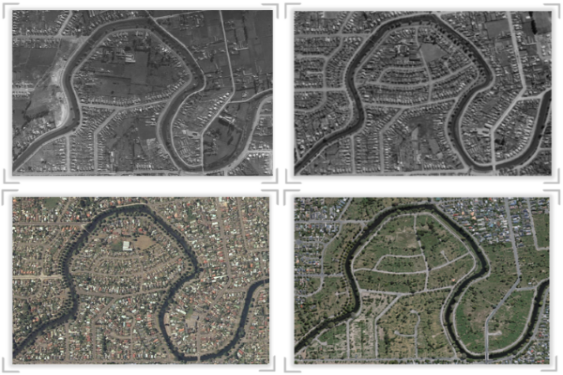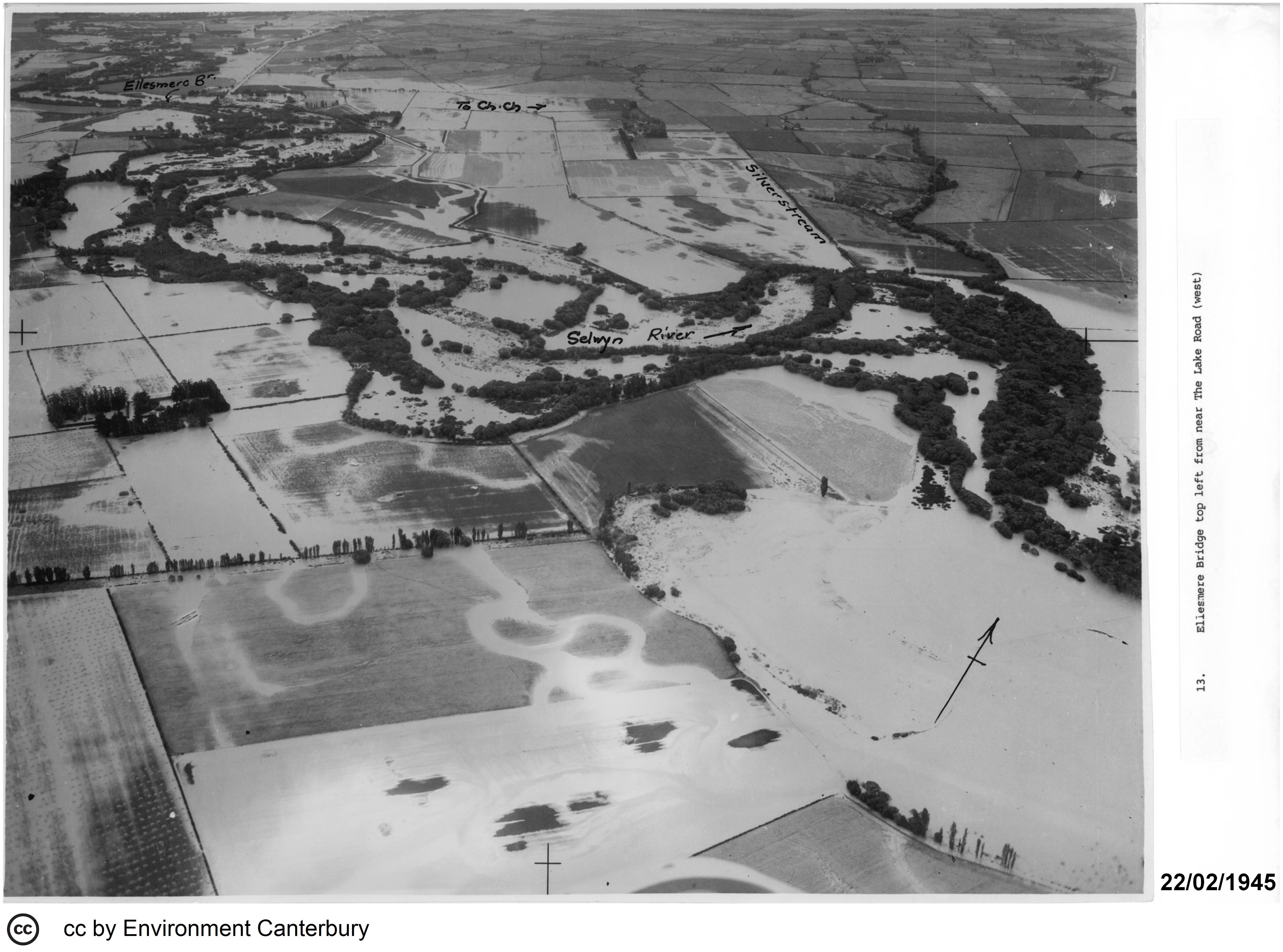News
Imagery collections on Canterbury Maps

Canterbury Maps hosts a wide range of imagery captured in the Canterbury region. You can find historic aerial imagery dating back to 1926, new aerial imagery captured each summer and hazard event imagery such as flooding, earthquakes or fires. These collections have been captured by a range of sources for various purposes. Continue reading to find out how you can view these imagery collections within the Canterbury Maps applications.
Historic imagery
Did you know you can find Historic aerial imagery captured as far back as 1926 on Canterbury Maps? This historic imagery was captured for various reasons including basic topographical information, geological surveys, power transmission, roading and defence purposes among others.
Until recent years, the imagery was stored in film canisters in a vault where they were difficult to access and began to decay. In 2015, the Local Government Geospatial Alliance (LGGA) and Land Information New Zealand (LINZ) began a scanning project to prevent this important record of our history from being lost forever. You can find all raw scanned images available for public access on Retrolens.
At Environment Canterbury, the process is taken even further with the removal of the metadata around the film edge and giving the image a location on the map through a process called georeferencing. Each summer, University students complete this work and add their progress to the Canterbury Maps historic basemaps for public viewing. The basemaps are grouped in 5-year blocks to easily manage the datasets, however, specific capture dates can be found by adding the 'Historic Aerial Imagery - Extents' layer to the map viewer.
The further processing of the images provides the Canterbury Maps partners with information for better decision making by using the images to support the potential identification of contaminated land sites, accretion and recession of coastlines, changes in areas of significant vegetation, river engineering and land use change over time.

How can you access the historic imagery?
The time slider in the Property Search application is the easiest way to view the historic imagery collections. Click here to go to the Property Search application and use the time slider pictured below to view the historic imagery. You will notice the imagery isn’t available everywhere. These collections grow each summer as the imagery is processed and made available.

You can also view the imagery in the Map Viewer through the basemap gallery. If you want to add other information to the map or print the map, this is the best option. You can also find the specific dates each imagery dataset were captured. Click here for instructions on how to find dates of capture.
Latest imagery
Each summer the 11 Canterbury councils, together with a public-private partnership, capture a different area of the region, over what is now a decade-long programme. Thousands of individual photographs are then combined to provide a continuous surface all across Canterbury. The digital photographs are captured using a specialist high powered camera on board an aircraft flying at an altitude of 1400m, during optimum weather conditions to minimise shadowing. Images are then processed to ensure correct geographic location and overlapping, and then terrain is flattened in a procedure called 'orthorectification'.


Aerial photographs provide the real-world context to our location information for Local Councils and Environment Canterbury’s wide variety of functions, including monitoring land use, traffic management, managing public and private utility networks, property information and developing farm environment plans. Regionally it is used as part of our processes in hazard identification, coastal erosion, climate change monitoring, river engineering including flood control, biosecurity, environmental monitoring, regional policy and planning and for considering applications for certain resource consents – land use consents, coastal permits, water permits, discharge permits and planning public passenger transport. In the event of a disaster, the imagery is a record of what the prior state was preceding an event.
How can you access the latest imagery?
The latest imagery basemap is the default basemap in both the Property search and map viewer applications. This basemap is made up of satellite imagery (when zoomed out) and aerial imagery (when zoomed in). You can view the aerial photographs in 2D in Canterbury Maps Viewer or both in 2D and 3D in the Canterbury Maps Property Search, best experienced via a tablet or desktop computer.
Flood imagery
Environment Canterbury monitors flooding in the Canterbury region and maintains a collection of oblique and vertical aerial photographs and ground photographs taken during (or following) past flood events. The locations of most photographs held by Environment Canterbury have been mapped, but other photographs may exist which have not yet been mapped.
For areas north of the Rakaia River, the field of view for each oblique aerial photograph is marked by a line and arrow. South of the Rakaia, oblique photos are currently marked with just an arrow, but these are in the process of being re-mapped in the same format as for those north of the Rakaia. In both areas, the field of view for vertical aerial photographs are marked by a polygon, and ground photographs are marked by a point to indicate the location that the photograph was taken from.
Flood imagery provides a record of the flooding event and aids in future planning, river engineering and flood control.

How can you access the flood imagery?
The Flood Imagery Register can be accessed here. Type in your address and the imagery available will appear on the right hand panel. You may need to zoom out until you get some results. Use the map to pan and zoom to search available imagery. Available imagery can be previewed by selecting a thumbnail in the side bar. Imagery can also be sorted and filtered by date in the side bar menu.